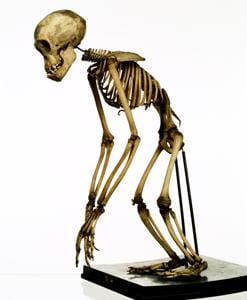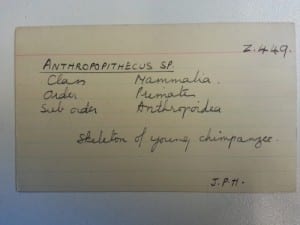Specimen of the Week: Week 170
By Jack Ashby, on 12 January 2015
 A well known technique in making things desirable is to make them appear unattainable. You want it because you’ve been told you can’t have it. This week I’m employing this strategy to make you fall in love with a specimen. Obviously you can’t have any of our specimens as we’re an accredited museum avowed to care for our collections responsibly, which more or less rules out giving them to the public.
A well known technique in making things desirable is to make them appear unattainable. You want it because you’ve been told you can’t have it. This week I’m employing this strategy to make you fall in love with a specimen. Obviously you can’t have any of our specimens as we’re an accredited museum avowed to care for our collections responsibly, which more or less rules out giving them to the public.
Not only can you not have this week’s Specimen of the Week, you can’t even see it, and there isn’t much more unattainable than that. This isn’t because it’s invisible to the naked eye (though it is small), it’s because it isn’t here.
This week’s Specimen of the Week is…
**The Infant Chimpanzee Skeleton**
1) Where is this delightful little skeleton then? The baby chimp is engaging in what the popular press have dubbed “Health Tourism”. Hopefully you have seen some of the hoohah around our extraordinarily exciting project Bone Idols: Protecting our Iconic Skeletons. Well, the chimp has been packed up and sent away for some extremely important conservation work. Along with the rhino and the orangutan that I’ve already written about, the chimp is away for the rest of the month with a specialist skeleton preparator.
2) Chimpanzees are listed as Endangered by the International Union for the Conservation of Nature. It earned this ranking as its population is expected to have decreased by over 50% over the course of three generations (from 1970s to 2030), and the causes for this decline are not expected to cease. This means that museum specimens of chimps are extremely important. For one thing it renders them effectively uncollectable today.
3) The skeleton in the Grant Museum is in urgent need of conservation to allow us to continue to use it in teaching, research and public engagment, and that’s why it’s included as one of the 39 specimens in the Bone Idols project. We are asking the public to help us raise the second half of the funding for this project, via our online giving page.
4) As part of the Bone Idols project, the chimp will be remounted on a new base, be dry and then chemically cleaned to remove decades of particulate pollutant build-up and have repairs to the limbs and mount. We have already commissioned a new case for it, to protect it from future damage once it returns to us freshly conserved.
5) Once again The Curse of The Disappointingly Poor Historic Documentation strikes again. We don’t have a lot of information about where this specimen comes from. On the specimen’s index card – a cataloguing system employed here from the early 20th Century up until the 1960s – the letters “J.P.H” are written.
It is fair to assume that this represents James Peter Hill, who was our Curator from 1906 to 1921. However it is not clear if JP Hill bought the specimen, donated, wrote the card for it or merely acquired it for the collection. Nevertheless it gives a maximum date for when it was collected.
We would be extremely grateful for any support you can give the Bone Idols project.
Jack Ashby is the Manager of the Grant Museum of Zoology.
One Response to “Specimen of the Week: Week 170”
- 1
 Close
Close




[…] with the unpacking of several smaller primate skeletons such as the juvenile orang-utan, one of the chimpanzees, and this week’s Specimen of the […]